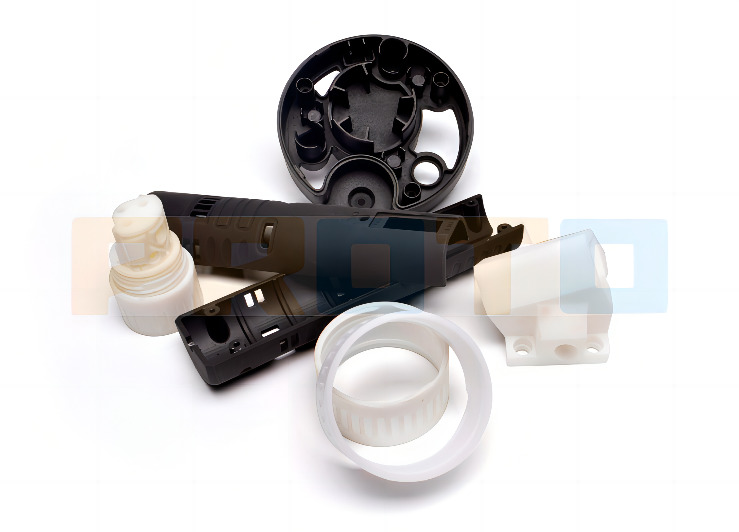CNC processing is the most important process for making prototype models. The diversification of prototype processing methods,It has not changed the status of CNC in the prototype manufacturing process.

Today, from the processing materials, application fields of CNC prototype models and the advantages of CNC prototype models.
These three aspects will give you an analysis of its characteristics.
CNC prototype models can process a wide range of materials
The materials that can be processed include ABS, POM, PC, acrylic (transparent material), stainless steel, aluminum alloy, H62 brass, Q235 iron, etc.
The following are some common materials, let’s learn about their physical properties and application range.
ABS prototype
Temperature resistance: 60-80℃
Features: Excellent strength and durability
Prototypes of electrical appliances, medical devices, cars, etc. mostly use this material.
PMMA acrylic prototype
Temperature resistance: 60-80℃
Features: high transparency
Mostly used in electrical appliances, LCD shell prototypes
POM race steel prototype
Temperature resistance: 90-110℃
Characteristics: Good strength, durability, hardness
Scope of application: mechanical gears, rotating parts prototypes
For physical property analysis of other materials, you can log on to our website and contact our staff.
CNC prototype processing has a wide range of applications
CNC prototype processing is often used for prototypes of automobiles, robots, medical, aerospace, design, small household appliances, and computer peripheral products. It can also be used to produce performance test standard parts for large complex products, such as air conditioners, monitors, audio, medical equipment, motorcycles, and automotive accessories. and other products.
CNC prototype models also have many advantages
CNC prototype processing has always been the mainstream processing method of modern prototype processing due to its many advantages. It is not only suitable for various fields, but also allows customers to achieve optimal results for verification purposes.
PROTO MFG provides a wide range of manufacturing capabilities and other value-added services for all of your prototyping and production needs. Visit our website to learn more or to request a free, no-obligation quote.